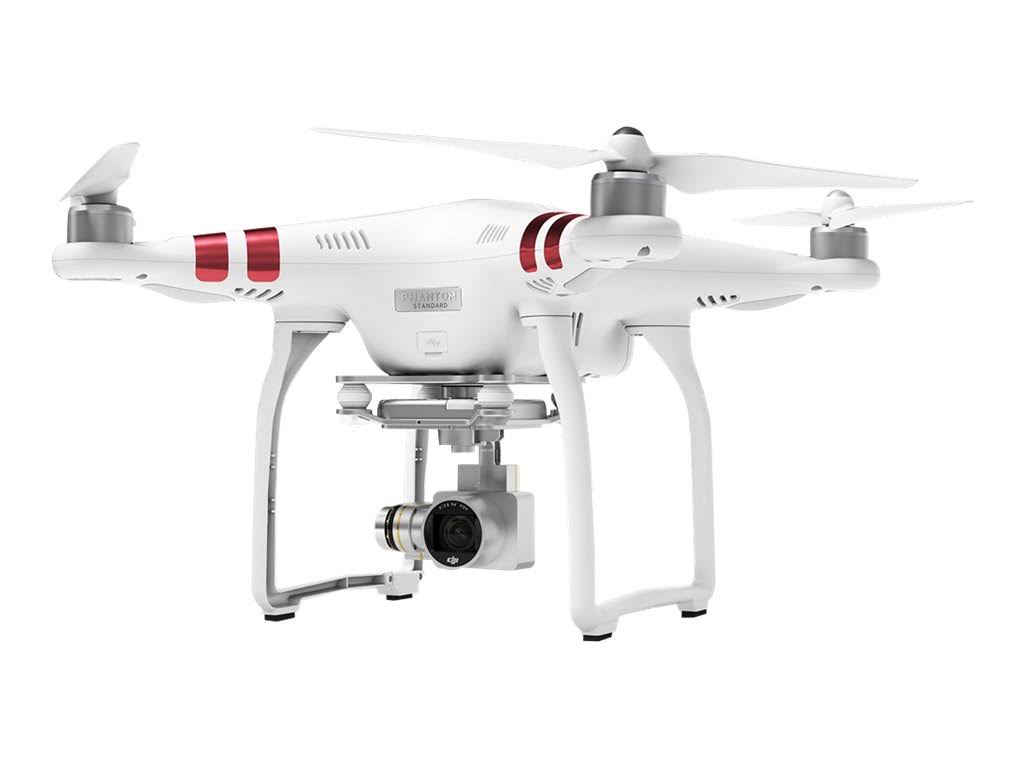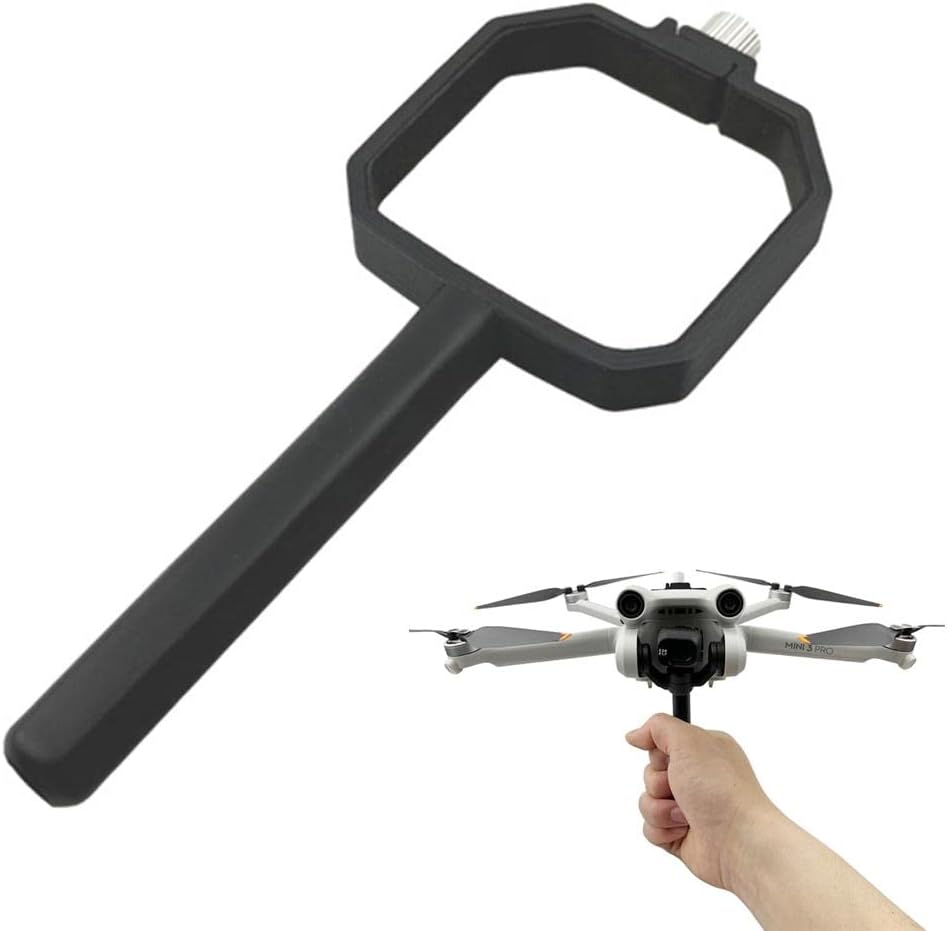Tips for drone flights from on board
Drone flights over water can provide great images, but require special care and attention. The risk of losing the drone completely is high. With our tips, we would like to help ensure that this never happens. However, we cannot provide any guarantee or warranty.
Starting and especially landing a drone on a moving boat represents the greatest challenges. Instead of a classic ground landing, the drone must be “captured” on approach. Because of its legs, which can also be used as handles, the DJI Phantom is a very popular model for hand launches and landings on a boat. For my drone, a DJI Mini 3 Pro, I purchased a take-off and landing handle made of 3D printed plastic.
Only when launching and capturing the drone on land has been well practiced should it be launched from a boat in motion.
Falcon training or practice, practice, practice…
This video shows what can happen without appropriate preparation.
Why wasn’t the drone turned 180 degrees for an emergency stop? The crew was probably simply unaware of this possibility.
After a firmware update, it is possible to use the DJI Mini 3 Pro in conjunction with virtual glasses and a new motion control unit.
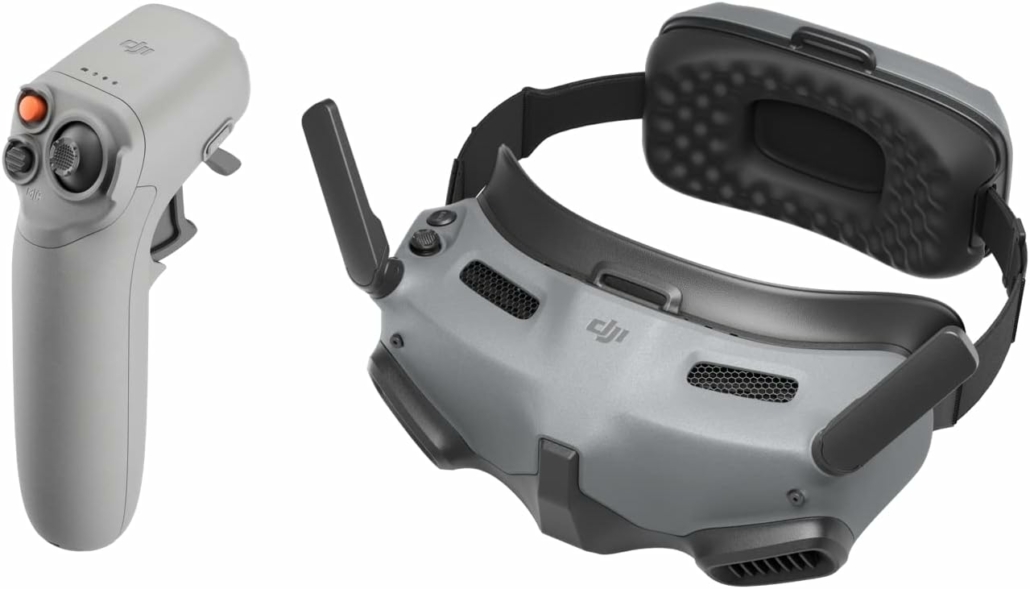
This combination is a game changer for me. This makes flight maneuvers on the boat much easier than with the joystick remote control. The virtual glasses also enable good vision, even in strong sunlight. The control unit makes “landing” on the boat easier; I can now do this without outside help. The control unit is operated with one hand and the drone is started or captured with the other hand.
Up and down behavior when flying at low altitude over water
Drone pilots can expect strange and confusing up and down behavior from their drones, when flying at low altitude over water. This is reported in many videos, but I cannot confirm this behavior myself. It is possible that firmware updates in the newer DJI drones have provided a remedy.
In critical situations, always fly by sight in order to better control unexpected behavior of your drone and take quick countermeasures if necessary.
To-Do’s
Standard check – Before the flight
Carry out the standard pre-flight check with particular care. Make sure that the propellers are correctly and firmly attached. Check that the battery is fully charged and correctly locked in its compartment. Check the entire housing of the drone for damage or cracks. Make sure that there is enough memory on the SD card and that the lens is clean. We recommend a polarizing filter for shots over water surfaces. This filter minimizes distracting reflections and intensifies the colors.
Find out about the legal conditions for your flight.
Flight app setting: Behavior in the event of signal loss
Set the signal loss behavior to “hover”. The other two options, sending the drone back to the homeport (RTH) or descent, could result in the loss of the drone because the take-off point has changed and the drone would “land” in the water.
Flight app setting: Max. distance
Make sure that the maximum distance for your drone is set to ‘unlimited’. If you are on a moving boat, you may move away from the starting point quickly. A distance that is set too low could cause the drone to stop suddenly because the maximum distance to the starting point has been reached. In this case, it helps to update the starting point.
Flight app setting: Update homepoint
Find out how to update the homepoint and memorize the location for this setting in your flight app. Our video shows how this is done with the DJI FlyApp. Some flight apps offer the option for the homepoint to be permanently and automatically updated. My app only offers manual updating. Finding this setting quickly should be practiced before starting so that it can be done quickly later.
Flight app setting: obstacle avoidance
When you launch the drone from onboard, obstacle avoidance should be disabled. Shrouds and especially the backstay could otherwise interrupt the approach and capture of the drone. Of course, you need to be even more aware of these danger spots.
GNSS satellite review
Most drones can use their ground sensors to maintain position and handle indoor flights even without satellite reception. The prerequisite for this is a suitable soil structure. Water surfaces are unsuitable for this. When flying a drone from on board, it is all the more important that sufficient satellite reception is received before takeoff. It is advisable to turn on the drone before flying and wait a few minutes so that it can receive enough satellite signals.
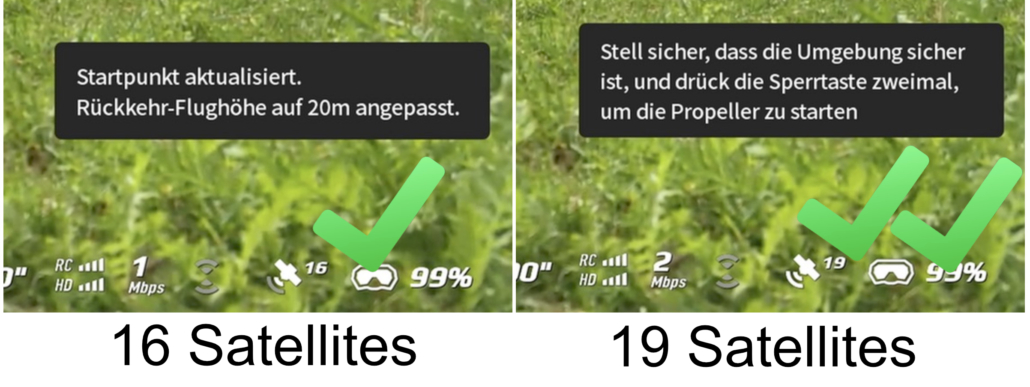
Battery
Only start with a full battery and start the return flight with 50% battery capacity. Pay attention to the charging cycles of your battery: After around 100 cycles, the battery loses performance and lifespan. After 100 cycles, it is best to only use the battery for non-critical flights.
Wind direction and strength
Launch the drone towards the wind to minimize unexpected drifts. Each drone model has a specific maximum wind resistance. For example, for the light and compact DJI Mini 3 this is 5 Beaufort. The handle creates more drag, so this value has to be reduced slightly. I don’t launch in winds over 4 Beaufort or 15 knots when the handle is fitted. An advantage on sailing boats: Here there is usually an indicator for the direction and strength of the wind. Pay attention to the wind direction and use the tailwind for the return.
Correct hand launch
When hand-launching, you must keep the drone in a horizontal position and never tilt it backwards, forwards or sideways.

Birds and drones

Sometimes drones become the target of bird attacks. To avoid such incidents, you should avoid birds such as seagulls following a fishing trawler. However, if an attack is imminent, it is advisable not to follow the natural flight instinct and descend, but to ascend quickly. This makes it more difficult for birds to follow, as they are faster when descending, where they use gravity, but need more time when ascending, when they have to circle.
We have fitted our DJI Mini 3 Pro with red reflective strips to deter birds. However, the four propeller arms in which the drone’s antennas are located were not covered.
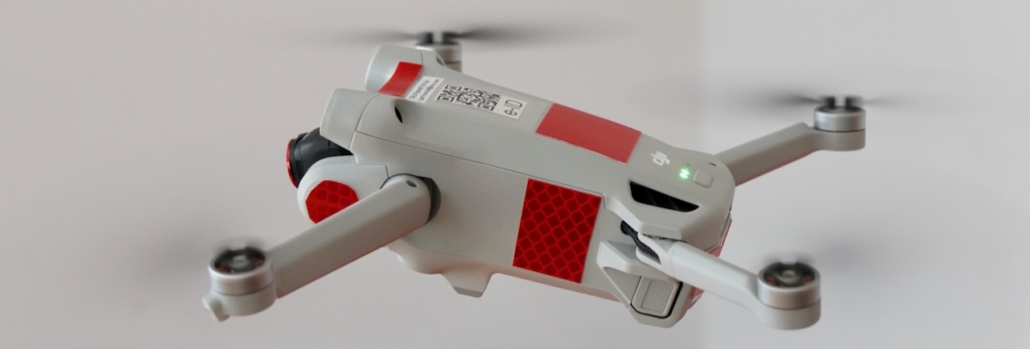
Coming soon…….
……..Video with take-off and landing approaches from board as well as aerial shots of sailing.
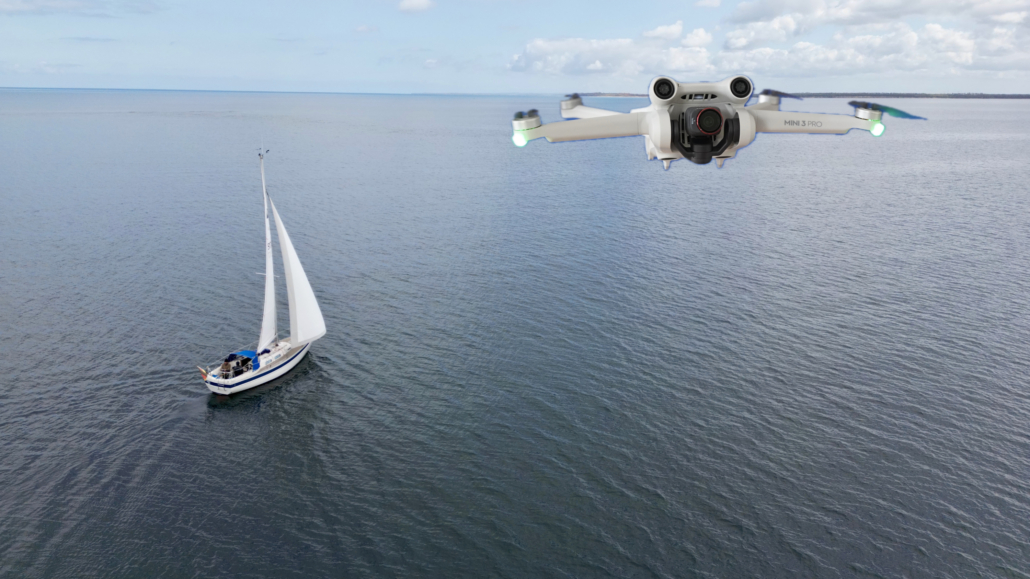
Videos from professionals and…
…..dilettantes

